The ARB released it's findings on the 130 crash in Afghanistan, Pilot error. Follow the checklist.
Investigation report determines cause of C-130J crash in October
The full report can be looked at/downloaded here:
http://www.airforcemag.com/AircraftAccidentReports/Documents/2016/100215_C130J_JALALABAD.pdf
Investigation report determines cause of C-130J crash in October
The full report can be looked at/downloaded here:
http://www.airforcemag.com/AircraftAccidentReports/Documents/2016/100215_C130J_JALALABAD.pdf
